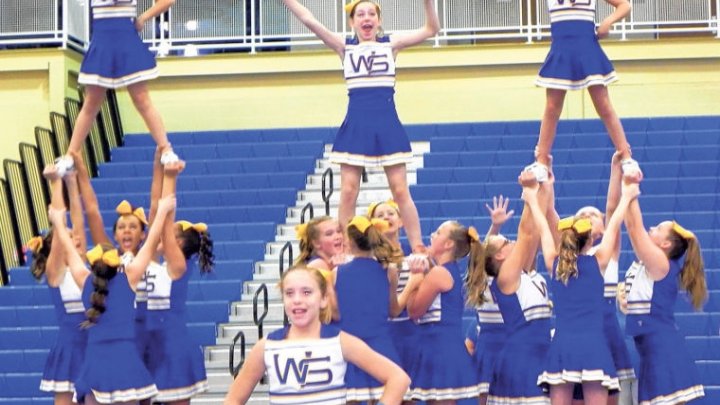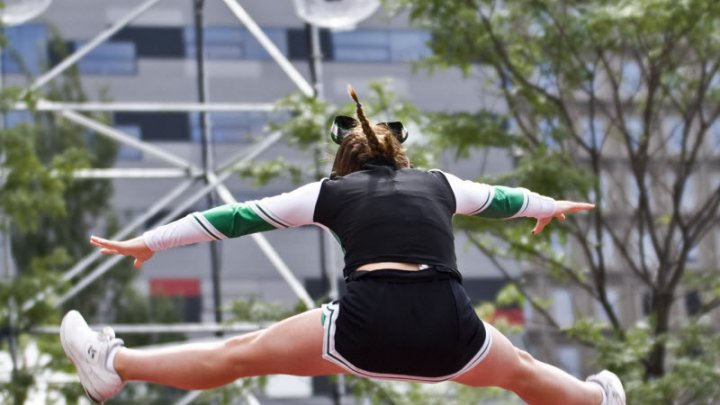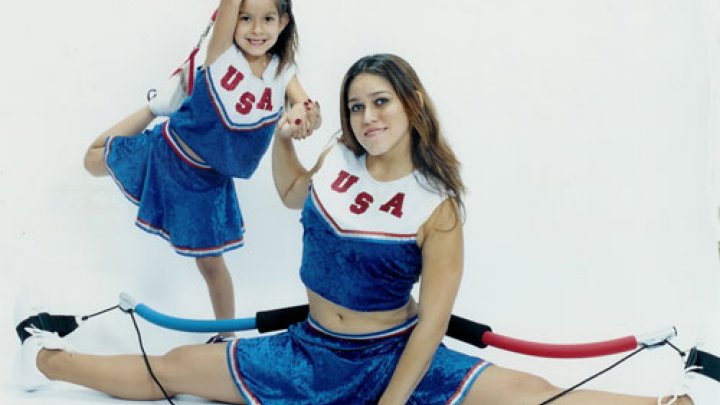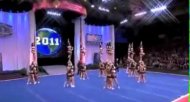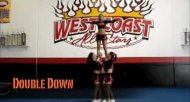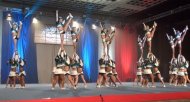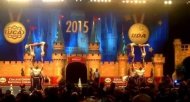When did you first decide you wanted to be a cheerleader? If you're really honest with yourself, you may realize that the moment came when you first saw someone flying through the air and defying nature to perform an amazing stunt. You may have dreamed about one day being the person to perform such a death-defying feat. Whether or not you knew what it would take to become one of those people at the time, you started down a path toward cheerleading, and the dream never died.
When you reach an advanced enough level with your cheer squad, you will want to begin trying basic stunts. Starting with the absolute basics is essential, and you can work your way up from there. Though it will likely be years before you are able to move onto actual tosses, there are several fun and impressive stunts that even younger cheerleaders can put into their routines to add a touch of flair.
Above all else, you must remember that safety is the most important part of stunting. The acrobatics that are performed by cheerleaders can be highly dangerous and even fatal if you don't take the right safety precautions. When you are first starting out, never try any stunts without supervision by your coach. Once you feel prepared to begin learning how to do stunts, here are the first things you need to know.
The Positions
There are three basic positions for every cheerleading stunt that you will learn to perform. The first is that of the flyer. The flyer is the one who is lifted into the air to either strike a pose or perform an acrobatic trick. You may have always dreamed of being a flyer, but it takes a very specific type of person to be able to take on this role. In addition to being small and light, flyers have to be extremely strong, have a great sense of balance, and be fearless.
The next cheerleading position is the base. For most stunts, there will be two bases for every flyer. They are really the unsung heroes of stunting because it is the bases' strength that allows the flyer to complete the trick. Bases are responsible for hoisting the flyer up, providing a sturdy platform for her to stand on, and helping catch her at the end of the stunt. You may think that you need a great deal of upper body strength to be a good base, but in reality it is the legs that provide a good deal of the base's stability.
The third stunting position is that of the spotter. There is always at least one spotter for every stunt, but for more difficult tricks, it is customary for there to be two. The back spot is the position necessary for every stunt. This person will call out the count for the stunt, making sure everyone is on the same page. They will also keep a firm grasp on the flyer's ankles and catch her when she descends from the base's hold. The back spot is one of the most important positions in stunting, because it is their job to keep the flyer safe. For more advanced tricks where there is need for a second spotter, this position is called the front spot. When used, this person will take some of the flyer's weight off the bases by holding onto her shins, as well as providing a second body to catch the flyer if anything should go wrong with the stunt.
Basic Stunts
The first stunts you will attempt when you are starting out are those in which the flyer's feet are lifted no higher than the bases' waists. Some of the most basic stunts include:
Double Thigh Stand - The two bases assume deep lunges toward each other with their inner feet touching one another. The back spot then helps the flyer stand on the bases' thighs, and the flyer puts her hands up.
Hanging Stag - The two bases lift the flyer up by her extended arms until their arms are straight and she is hanging from their grip. The back spot holds onto the flyer's waist and provides support.
Shoulder Sit - One base supports the flyer as she sits on the base's shoulders with her legs around the base's waist. The back spot supports from behind.
Intermediate Stunts
Once you have progressed past the basic stunts and can start to perform more difficult tricks, here are a few of the most iconic cheerleading stunts.
Full Elevator - The two bases lift up the flyer on a platform provided by their hands so that their arms are above their heads, and the flyer is standing above them with her arms raised. The back spot holds onto the flyer's ankles while the optional front spot holds her calves.
Liberty - A one-legged stunt similar to the elevator, the bases lift the flyer above their heads. She stands on their hands with one leg and puts the other leg up. Both spotters support the flyer's leg and make sure she isn't falling.
Advanced Stunts
While it will be years before you progress from the beginning stunts to the most advanced moves cheerleaders can do, it is still worthwhile to learn a few of the most common terms now so that you feel comfortable with what lies ahead.
Scorpion – This stunt is similar to the Liberty but more advanced. The flyer assumes a position with her leg extended behind her. She then reaches her arms over her head and behind so that she can grasp the extended leg.
Basket Toss - The bases lift up the flyer onto their hands with the assistance of both spotters. They then toss the flyer straight up into the air where she does the splits mid-jump. The flyer falls into a "basket" created by the hands and arms of the bases and spotters. There are many variations on the basket toss in which the flyer assumes different positions in mid-air.
Getting Started
Your coach will walk you through everything you need to know when you are getting started trying out stunts. Approach the exercise with excitement, though you may feel slight trepidation at first. Remember that the first few stunts you perform may not come easily, but they won't be very dangerous, so you have nothing to fear. You will probably get to try all of the positions at first and find out which one you are best at. Go in with an open mind, and you will be able to tell which position that feels right for you. Finally, just remember to have fun. Seeing stunts performed is one of the most exciting things to watch in a cheer routine as a spectator, and now you're in on the action.



